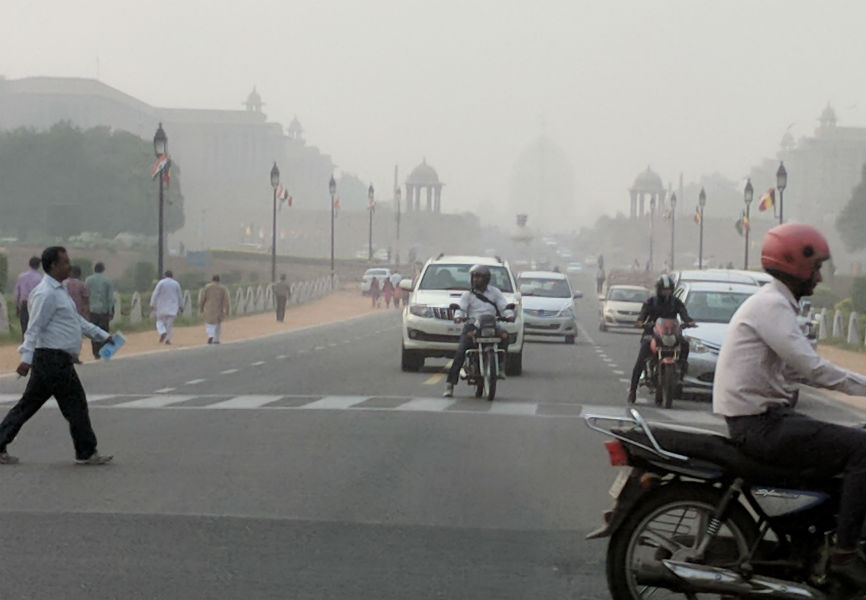Slow winter winds and farmers burning off crop stubble ahead of a fresh planting season have spiked pollution levels in New Delhi to severely unhealthy levels (across parts of
Pakistan and much of North India too, though that's less widely reported). When I visited Delhi last week for an investment conference, I was inhaling the equivalent of
44 cigarettes a day. Last winter was
just as bad. All told, some
2.5 million Indians are estimated to die prematurely each year due to pollution.
Although outcry is growing, particularly among educated elites, the government response has been—and will likely continue to be—lackluster despite the costs associated with these record-setting pollution levels. Many schools were closed for several days last week and more closures are possible, construction work slowed, and trains and flights were delayed. Due to low visibility, my own departing flight sat on the tarmac for an hour before being allowed to take off.
The problem is a political one. The local Delhi government has no authority to enforce restrictions on crop stubble burning in neighboring agrarian states. Those state governments, meanwhile, refuse to take action out of fear of alienating farmers that make up a substantial proportion of voters. India's central government also seems uninterested in coordinating action; Delhi and many of the surrounding states are led by opposition parties that clash with the nationally-ruling Bharatiya Janata Party (BJP) almost as much as they do each other. The BJP is facing another round of state elections elsewhere in the country and is wary of any move that could be construed as sacrificing farmers' interests in favor of wealthier urbanites.
Instead, India's highly independent and activist judiciary is likely to step in to fill the governance void, just as it has in past winters when air quality has deteriorated. But while judges can
verbally berate and order government officials to take action, judicial diktats do not assure that smog-fighting measures such as restricting driving, temporarily closing local coal-fired power plants, and punishing crop stubble burning, are actually undertaken in a sustained manner.
In order to ensure that next winter (and the one after and the one after that) does not again bring with it debilitating smog, state governments, the local Delhi government, and the central government will have to work together. Farmers need economical alternatives to remove crop stubble from their fields (some level of subsidy is probably required), Indian cities need better public transportation options (especially bus networks) to curb the unsustainable growth of personal vehicle use, older more-polluting vehicles (especially trucks) need to be taken off the road, and older more-polluting urban power plants need to be permanently closed.
The ruling BJP has already shown its commitment to improving Indian quality of life through a massive sanitation project aiming to
bring toilets to 60 million homes by 2019. Now, though, it's time to look to the sky – and address the public health crisis in the air.

 Raisina Hill, seat of government, New Delhi. The ceremonial president's residence is barely visible in the smog. /Sasha Riser-Kositsky
Raisina Hill, seat of government, New Delhi. The ceremonial president's residence is barely visible in the smog. /Sasha Riser-Kositsky